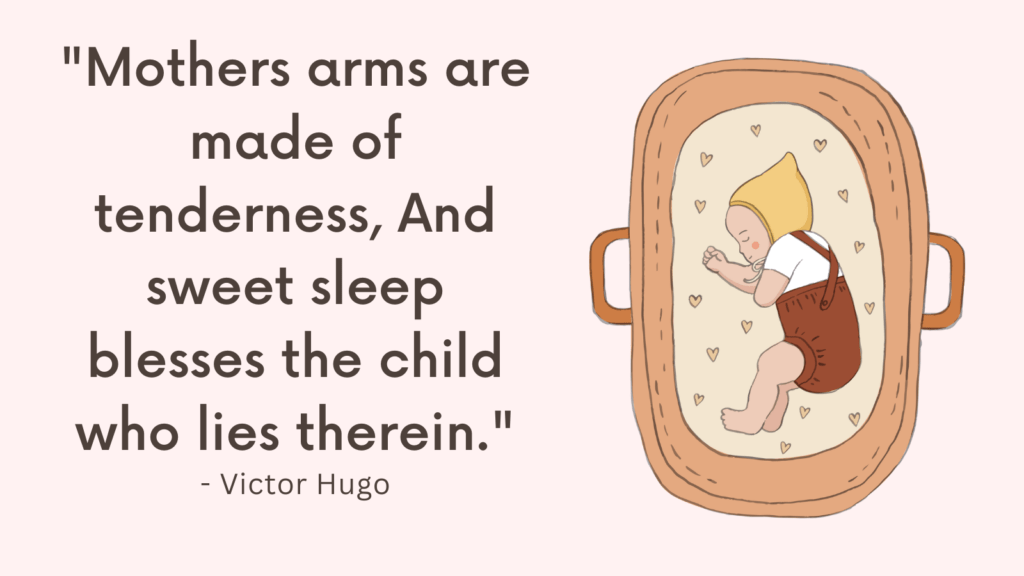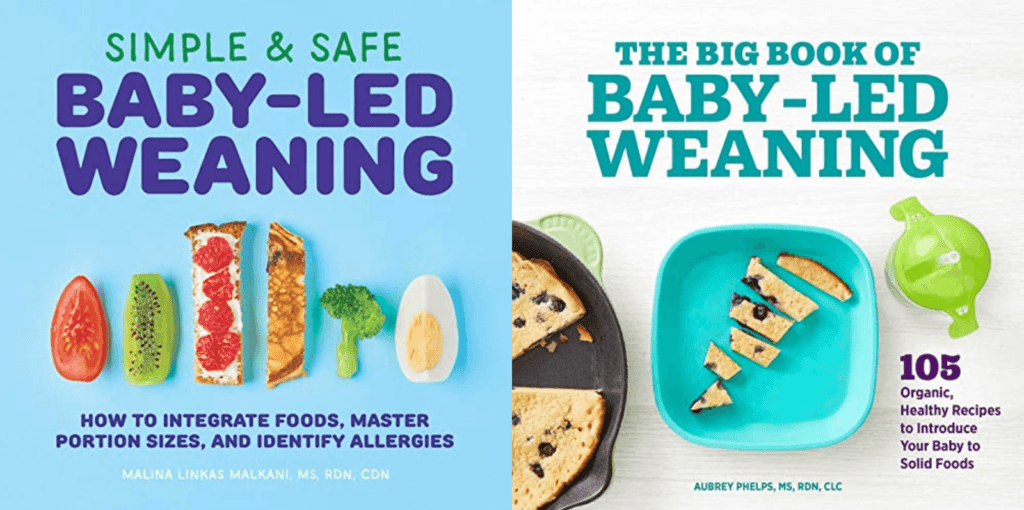In this post, you’re going to learn when babies go from 2 naps to 1.
- Baby Sleep Patterns
- Importance of Naps For Babies
- How Many Naps Do Babies Need?
- When Do Babies Go From 2 Naps To 1?
- 5 Signs That Your Baby Is Ready to Go From 2 Naps To 1
- What To Expect When Going From 2 Naps to 1?
- Tips To Help Your Baby Go From 2 Naps To 1
- Creating A Relaxing Sleep Environment
- Techniques To Soothe Your Baby When They Refuse To Nap
- Conclusion
- FAQ
Baby Sleep Patterns
Babies have different sleep patterns than adults.
For the first few months of life, babies will often wake up every 2-4 hours to feed and then fall back asleep.
As they get older and their stomachs grow, they may start sleeping for longer stretches at night.
It’s important to establish a consistent bedtime routine for your baby to help them associate certain actions with sleep. This could include a bath and some quiet time before bed.
It’s also important to create a safe and comfortable sleeping environment for your baby. The American Academy of Pediatrics recommends that babies be placed on their backs to sleep on a firm mattress with a tightly fitted sheet. (source)
If you are having difficulty getting your baby to sleep or stay asleep, there are many resources available such as pediatricians, sleep consultants, or online support groups.
It’s important to prioritize your baby’s sleep for their well-being and your own.
Related: Top 7 Alternatives To Swaddling to Soothe Your Baby
Importance of Naps For Babies
Naps are extremely important for babies.
Here are some reasons why:
1. Promote Brain Development: During sleep, the brain processes and stores new information. Babies need a lot of sleep to help their rapidly growing brains develop properly. (source)
2. Reduce Irritability: When babies are overtired, they become fussy and irritable. Naps can help prevent this by ensuring that they get enough rest.
3. Improve Mood and Behavior: Naps can help improve a baby’s mood and behavior by reducing crankiness and improving attention span and concentration. (source)
4. Support Physical Growth: While sleeping, the body produces growth hormone which helps promote physical growth. This is especially important for babies who are rapidly growing. (source)
5. Enhance Immune System: The body repairs and strengthens the immune system during sleep. Napping can help enhance the immune system of babies, keeping them healthy and strong. (source)
Related: Receiving Blanket vs Swaddle
How Many Naps Do Babies Need?
The number of Naps a baby needs depends on their age and individual sleep needs.
Here is a general guide:
– Newborns (0-6 months): newborns typically nap for short periods throughout the day and night, averaging 16-17 hours of sleep total per day.
– Infants (6-11 months): infants typically take 2-3 Naps per day, totaling 13-14 hours of sleep per day and the longest sleep period is about 6 hours on average.
– Toddlers (1-2 years): toddlers usually take 1-2 Naps per day, with a total of 8-9 hours of sleep per day.
(source)
It is important to note that every baby is different, and some may require more or less sleep than others.
Pay attention to your baby’s sleep cues and adjust their nap schedule accordingly.
When Do Babies Go From 2 Naps To 1?
Most babies transition from two Naps to one nap between 12 and 24 months of age. (source)
However, the exact age range can vary depending on the baby’s sleep needs and overall development.
Some babies may drop their second nap as early as 11 months, while others may continue to take two naps until they are 24 months old.
It’s important to observe your baby’s sleep patterns and adjust their schedule accordingly to ensure they are getting enough daytime sleep.
Related: Newborn Doesn’t Like Swaddle? Here’s What to Do Instead
5 Signs That Your Baby Is Ready to Go From 2 Naps To 1
There are several signs that your baby is ready to transition from two Naps to one nap:
1. Longer wake-up times: As your baby grows, they will be able to tolerate longer periods of awake time between naps. If your baby is consistently staying awake for longer stretches, they may be ready to transition to one nap.
2. Difficulty falling asleep: If your baby is having trouble falling asleep for their second nap, it may be because their body is transitioning to needing only one nap.
3. Skipping naps has little to no effect: If your baby is active and behaving normally despite missing a nap, it could indicate they are ready for one nap instead of two.
4. Your baby’s naps are becoming increasingly shorter: If your baby is sleeping for one or one and a half hours instead of two or three, it could indicate they are ready for one nap instead of two.
5. Age: Generally, babies are ready to transition from two naps to one between 12 and 24 months old.
Related: 10 Best Books For New Moms
What To Expect When Going From 2 Naps to 1?
The transition from two Naps to one nap is an important milestone for babies as they grow and develop.
Here are some things that you may expect during this transition period:
1. Crankiness: Your baby may become more irritable or cranky during this transition period due to lack of sleep. It’s important to be patient and understanding as your baby adapts to the new schedule.
2. Increased nighttime sleep: As your baby transitions to one nap, they may start sleeping longer during the night to make up for the lost daytime sleep.
3. Tiredness towards the end of the day: With only one nap during the day, your baby will need to be able to stay awake and alert for longer stretches of time. You may notice that they seem more tired toward the end of the day as they adjust to the new schedule.
4. Nap length: Initially, your baby’s one nap may be longer than either of their previous two naps. But over time, you may find that their nap duration decreases slightly as they become more accustomed to the new routine.
5. Adjusting nap time: You may need to shift the timing of the remaining nap to better suit your baby’s needs. Experiment with different nap times to find the best fit.
Related: 10 Tips For Successful Breastfeeding
Tips To Help Your Baby Go From 2 Naps To 1
Transitioning your baby from two naps to one can be a bit tricky, as you don’t want to disrupt their sleep routine too much.
However, there are some tips you can follow to help make the transition smoother:
1. Make sure your baby is ready: Before transitioning to one nap, make sure your baby is developmentally ready to drop one nap. Typically this happens between 12 and 24 months of age.
2. Gradually adjust nap times: Start by gradually adjusting the timing of their morning nap, so it’s later in the day. This will start to push their afternoon nap back, until eventually they are only taking one nap in the middle of the day.
3. Extend wake times: As you adjust their nap schedule, extend the amount of time your baby is awake between Naps. This will help them stay tired enough to take a longer midday nap.
4. Keep a consistent routine: Stick to a consistent schedule, with meals and Naps at the same time every day. This will help your baby develop a solid routine and understand when it’s time to sleep.
5. Be patient: Remember that it may take a few weeks for your baby to fully transition to one nap. Be patient and allow them time to adjust to the new schedule.
6. Offer quiet activities: During the time when they used to have their second nap, offer quiet activities like reading, coloring or playing with toys. This can help them wind down and relax without needing a nap.
Following these tips can help your baby transition from two Naps to one with minimal disruptions to their sleep routine.
Related: How To Combine Breastfeeding And Pumping?
Creating A Relaxing Sleep Environment
Creating a relaxing sleep environment for a baby’s nap is essential to help them fall and stay asleep.
Here are some tips:
1. Keep the room dark: A dark room helps create a conducive environment for sleep, especially during the day when it is bright outside. Use blackout shades or curtains to minimize the light coming into the room.
2. Use white noise: White noise can help mask any outside noise that could wake the baby up. You can use a white noise machine, a fan, or even a phone app to create soothing sounds.
3. Maintain a comfortable temperature: The room should be at a comfortable temperature, not too hot or too cold. Keep the room between 68-72 degrees Fahrenheit. (source)
4. Use a comfortable mattress and bedding: Make sure the baby’s crib or bassinet has a firm and comfortable mattress. Use soft and breathable bedding like cotton sheets, and avoid using blankets or pillows.
5. Keep the room clutter-free: A cluttered room can be over-stimulating for a baby. Keep the room organized and free of distracting toys or decorations.
6. Follow a consistent routine: Establishing a consistent routine for nap time can also help your baby fall asleep faster and stay asleep longer. Stick to a set schedule as much as possible, and follow the same steps each time, like reading a story or singing a lullaby.
By following these tips, you can create a relaxing sleep environment that will help your baby get the rest they need.
Related: When Does Breastfeeding Get Easier? A Guide for New Mothers
Techniques To Soothe Your Baby When They Refuse To Nap
Here are some techniques you can try to soothe your baby when they refuse to nap:
1. Rocking: Gently rock your baby back and forth in your arms or a rocking chair. The motion can be soothing for them.
2. White noise: Play some white noise, such as the sound of rain or a fan, to help drown out any external noises that may be keeping your baby awake.
3. Massage: Give your baby a gentle massage or rub their back to help them relax.
4. Patting or shushing: Pating your baby’s back or making a shushing sound can be comforting for them.
Related: Best 7 Pregnancy Self Care Products
Conclusion
Each baby is unique, and what works for one may not work for another.
Be patient and keep trying different techniques until you find what works best for your baby.
FAQ
How Many Naps For 8 Month Old?
Generally, 8-month-old babies require about 2 to 3 naps per day, with each nap lasting around 1-2 hours. (source)
However, every baby is different and their nap needs vary.
It’s important to pay attention to your baby’s sleep signals and adjust their nap schedule accordingly.
If you’re unsure, consult with your pediatrician for personalized advice.
How Many Naps For 11 Month Old?
An 11-month-old usually needs 2 naps per day, one in the morning and one in the afternoon. (source)
Each nap typically lasts between 1-2 hours.
However, every baby is different and some may need more or less sleep.
It’s important to pay attention to your baby’s cues and adjust their schedule based on their individual needs.




